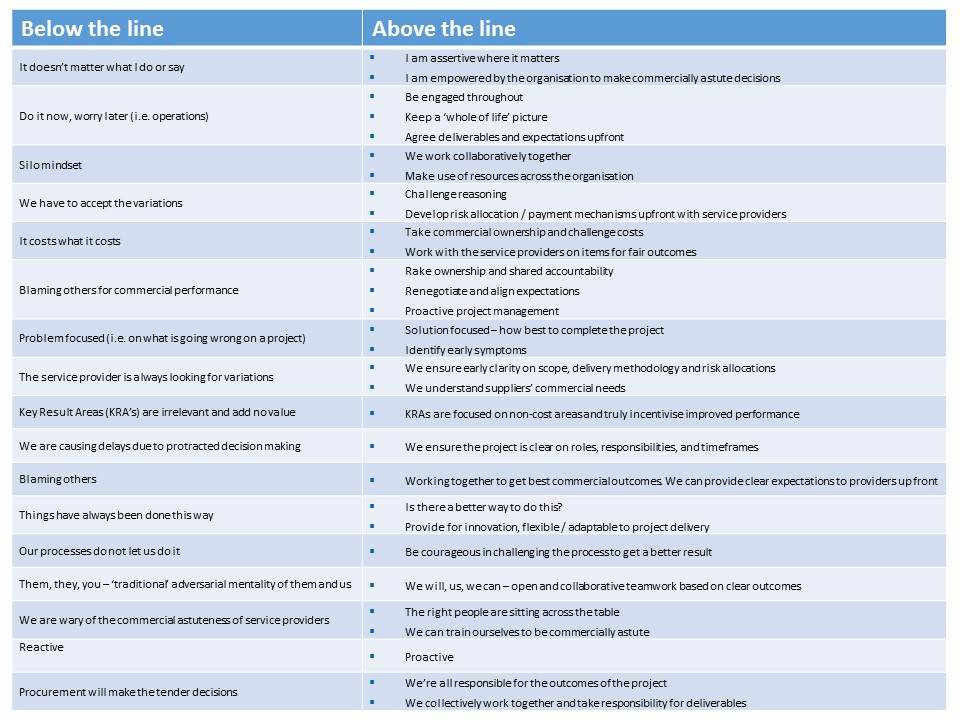
By Guest Blogger – Kim Tran
Imagine you are in a managing a project involving service providers. Three quarters of the way through the project, the service provider comes to you and says that there will be some unavoidable variations on the project due to some unforeseen circumstances, which will mean that the scope of the project needs to change slightly to reach your desired outcome and the project budget will go over. Your first immediate thought is along the lines of ‘service providers are always finding excuses to create variations, I shouldn’t be surprised’, or ‘well, I guess we just have to accept it’ or ‘why didn’t they mention at the start that this could happen so that we could at least put something in place to mitigate our risks?’
All these responses are examples of our automatic, default responses to situations, and are classic examples of ‘Below the Line’ behaviour and thinking. These responses may not be the most helpful, constructive or productive responses. It may seem difficult to prevent these situations and their responses from happening, but in actual fact it is possible to do so through using ‘Above the Line’ behaviours, which require some effort initially to embed the habit.
Commercial acumen, or business acumen, is sometimes perceived as or associated with behaviours at have to be hard, tough, dog-eat-dog, ruthless or greedy. This could not be further from the truth. Demonstrating effective commercial acumen practices and behaviours to obtain value for money and cost savings and mitigate contractual risk can be constructive, proactive and productive whilst building strong, trusting relationships with service providers and other stakeholders at the same time.
We have developed the table below as an example of what Below the Line and Above the Line behaviours look like from a commercial acumen sense. Have a look through and see if any Below the Line behaviours are familiar to you or someone you know. It is important to understand the potential negative impacts of each of the Below the Line behaviours on your project or commercial activities.

The next time you catch yourself or another exhibiting Below the Line behaviours or thinking in a commercial situation, we encourage you to consciously shift your thought process and response to an Above the Line response. It will not be easy the first few times, and will require an element of self-awareness and reflection.
However, as you begin to become more and more Above the Line, you will be amazed to see what positive difference it makes to your projects, commercial relationships and performance!



